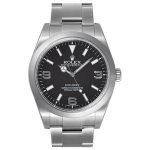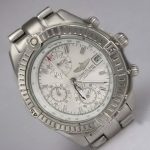
What Happened on a Modern-Day Chronometer?
The general definition of chronometer is a very much accurate timepiece, do you think so? But how accurate it is actually is? Well, the chronometer as we know it today grew out of the pursuit of a solution to the problem of determining longitude at sea. It turns out that the solution was to know when it was noon at your location on the open ocean and, simultaneously finding what time it was in Greenwich, England. Use simple arithmetic to pick out the time difference and you could find how far west or east you were.
We won't go into the technical details of what John Harrison did to design a cheap replica watch perfect enough to ultimately won the Longitude Prize, but win it he did. Basically, a movement that's been certified by COSC and achieved chronometer status is accurate to -4/+6 seconds per day. But there's a little more to it than that.
The testing it takes to achieve a COSC certificate is based on ISO standard 3159. A movement is tested over fifteen days, in five positions, at three different temperatures. Measurements are made each day and are compared to two atomic clocks. The standards for achieving a chronometer certificate are as follows:
And to reach this kind of performance, there are lots of physical effects and circumstances that need to be mitigated, avoided, or overcome, about individual components and their assembly.
Temperature effects include viscosity changes in lubricants and thermal growth or shrinkage of parts.
The dimensions of each component need to be controlled. Design tolerances - the degree to which each piece part is dimensionally identical to its siblings in a manufacturing lot, and to the original design dimensions - must be maintained. This also relates to how each component mates to the parts it interacts with.
And components that are not intended to directly mutual-effected or must never inadvertently touch each other. And it should go without saying that there can't be any foreign matter floating around the movement.
After all that is properly accounted for, there are still going to be infinitesimal differences in the build of each movement. These are due both to infinitesimal differences in the individual components used to build each movement, and minute differences in alignments - even with locating pins and shoulders.
These small differences are enough to cause differences in how each movement runs before adjusting. Therefore, a watchmaker is required to make those final adjustments and bring the replica watches movement into spec so it can pass the COSC tests. That's where - surprise! - "Adjusted in five positions" originated from on fake Rolex movements.

